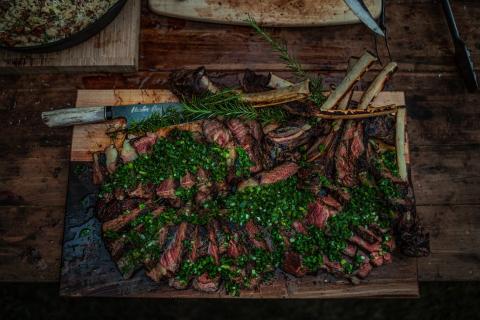Dr. Bronson Strickland is the co-director of the MSU Deer Lab and is a wildlife specialist. He shares his insight from years of research on the whitetail deer and deer movement, especially as it relates to deer hunting.
Deer movement is motivated by finding a good food source until breeding season. But most of the year, deer bed where they feel secure. Deer are ruminants and during that bedding time is when they are fully digesting their food. When the deer gets hungry again, they go back out to feed. Those movements are typically at sunrise and sunset.
There are times when deer move throughout the day, but they usually bed during the day and at night. If there is increased deer hunting pressure, you may see deer movement decrease. Deer may tend towards shorter distances and time of movement during hunting times. When they do move in high-pressure times, the deer move more in cover than out in the open, exposing themselves to deer hunters.
Home Range of Whitetail Deer
About 70 percent of yearling whitetail bucks will disperse from where they are born. Once they set up their home range, it's usually between 600 to 1,000 acres. This area also depends on the quality of the habitat. Deer need food, cover and water. If a habitat meets all those needs, then deer won't move as much. They may be confined to 200 to 300 acres if an area meets all the deer's needs, including bedding areas and a good food source. During the rut (a rut is the time when bucks look for a doe to breed with), that home range expands with the increase in deer activity.
The Mature Buck’s Travel Range During the Rut
Whitetail buck movement increases during the rut. Deer move miles away from where they normally range in search of a doe to breed. There are some whitetail bucks that will stay in their home range while other deer move away during October and November. Still others may extend somewhat from their home range but not too much. A buck's movement during the rut just depends on that individual deer's personality.
Best Weather Conditions for Deer Hunting
Hunting times are fluid, but anywhere you can go with the least amount of disturbance to the deer is when you need to go deer hunting. Deer are going to move every day, so rainy weather affects the deer hunter more than the deer. The main weather factor to consider is the wind. You want to be sure the wind conditions and wind direction are favorable for you to get in and out without being detected by deer.
How Does a Cold Front Affect Deer Movement?
Deer move every day, but you may find some increased deer activity as the temperature gets colder. That deer activity is always associated with some extreme event, such as a drastic temperature change, wind increase, or barometric pressure change that occurs in concert with the weather change.
Moon Phase Movement
Another factor that may affect deer movement is the moon phases. It seems that for every theory on deer movement during a given moon phase, there are three conflicting theories. There is also a degree of superstition around moon phases. If a hunter takes a mature buck on a full moon, they will forever believe that deer move more often on a full moon.
Dr. Bronson has also researched deer movement during the moon phases to determine if it has any effect on when deer move. For more on deer movement and all things moon phase, check out Dr. Bronson’s work, as well as other biologists at Mossy Oak.
Every deer hunter is trying to determine when there is buck movement. Not just when they are moving, but why they are moving. There is no simple answer to these questions. Variables like the rut, food source, bedding areas, water, wind and weather all affect whitetail deer movement. We are lucky that biologists at the MSU Deer Lab are researching the when and why of deer movement. The hope is Dr. Bronson’s research has helped you process what is fact and what is fiction. The science behind the when and why of deer movement could alter your deer hunting times and put you on track for a big, whitetail buck this year.































